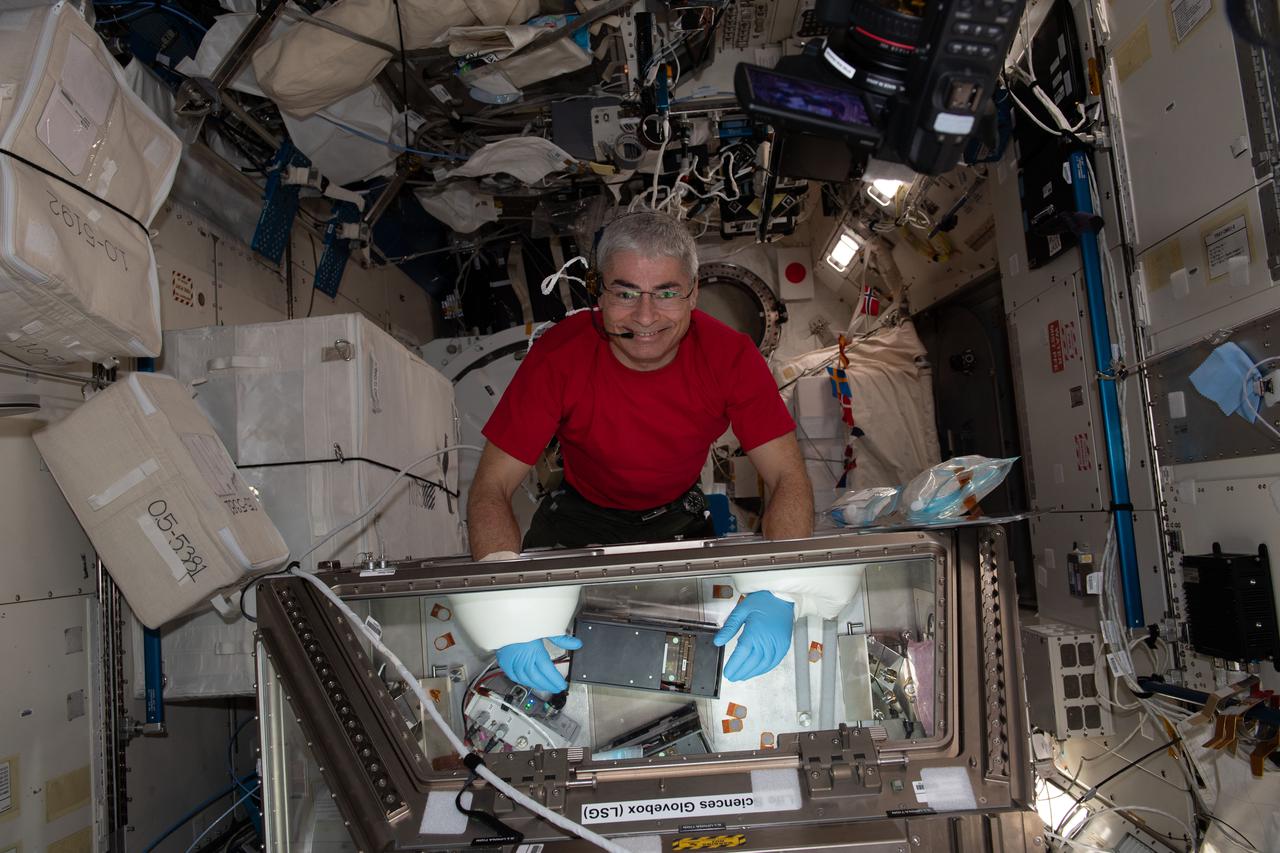Station Science Top News: March 31, 2022
NASA astronaut Mark Vande Hei returned to Earth after living aboard the International Space Station for 355 days — the record for the longest single spaceflight by a NASA astronaut. During his record-setting mission, Vande Hei spent many hours on scientific activities aboard station, conducting everything from plant research to physical science studies.
This extended mission provides researchers an opportunity to observe effects of long-duration spaceflight on the human body as the agency makes plans to return to the Moon under the Artemis program and prepare for human exploration at Mars.
Explore some of those studies in a new feature story and highlights video (below).

NASA astronaut and Expedition 65 Flight Engineer Mark Vande Hei conducts research inside the Life Science Glovebox for the Kidney Cells-02 experiment that seeks to improve treatments for kidney stones and osteoporosis. Credits: NASA
***
Researchers exposed cellulose-producing bacteria (used in fabric, electronics manufacturing, and tissue regeneration) to a simulated Mars atmosphere outside the space station for 18 months. Results suggest the cellulose biofilm may have protected the bacteria from undergoing mutations, making it a promising candidate for cellulose production on Mars during exploration of the planet.
The ESA (European Space Agency) EXPOSE-R2-BIOMEX study explored the extent to which terrestrial organisms can survive in extreme environments and what cellular components are resistant to space and Mars-like conditions. Bacteria that were sent to space and returned to Earth were reactivated and compared against ground samples. Analyses showed a similar configuration of the genome in space-exposed and Earth-grown bacteria, including proteins, enzymes, and plasmids. Some minor differences identified did not appear to impact the metabolism of cellulose creation.
***
As a part of a space station study, Al-7 Si alloys were melted at varying rates and subsequently analyzed for structural integrity of the solid shape. Observing melting and solidification in microgravity improves understanding of material processing on Earth, which could help create more pristine and durable materials for applications like turbines and 3D printing.
The goal of the ESA MICAST study was to observe the solidification process under different conditions of buoyancy and convection. Results showed that when the cylinders solidified in microgravity, microstructures within the metal were able to form without negative effects from temperature gradients or weight differences in materials. This helps create a baseline understanding of these properties for scientists.







